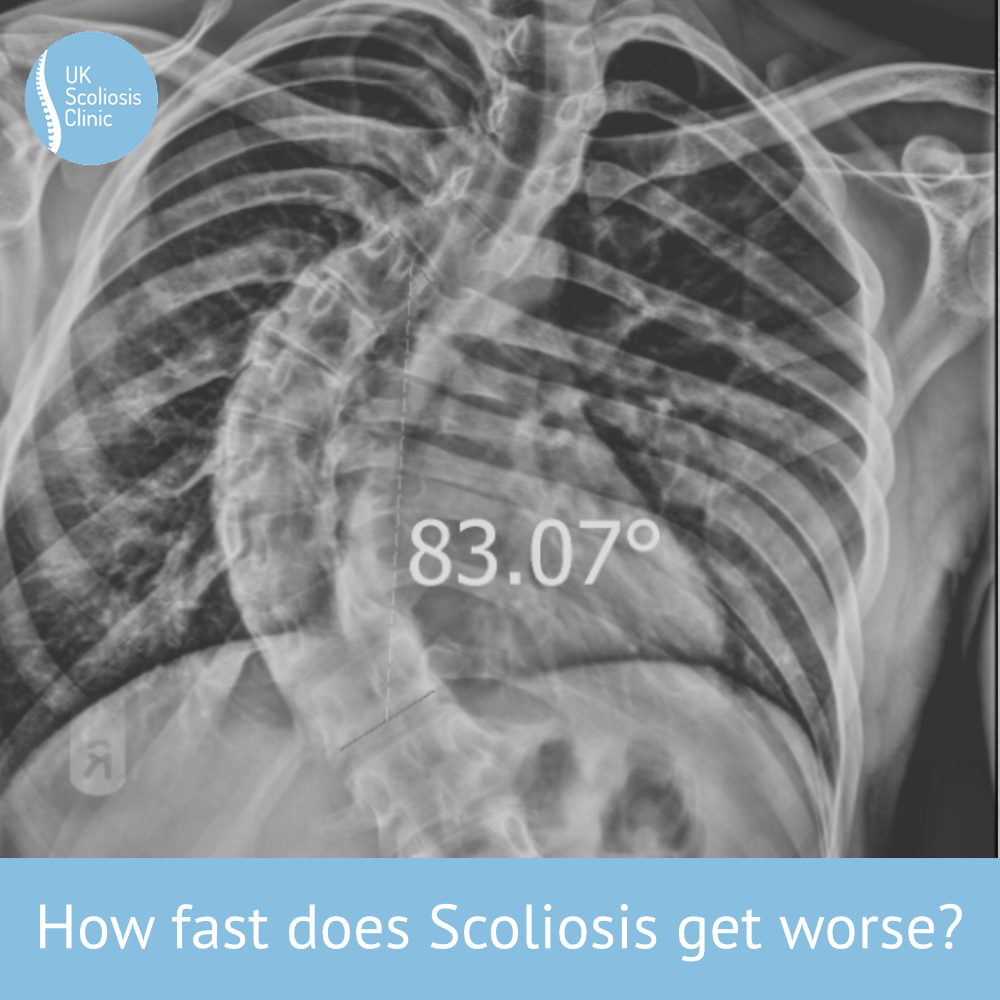
Scoliosis is a progressive condition – this means it tends to worsen with age, but the speed at which it does this can vary. Scoliosis is known to accelerate during growth spurts, and worsens more quickly in young people than adults. Then again, a form of scoliosis, known as “de-novo scoliosis” is common in older adults, and can also progress quite rapidly.
Each Scoliosis case is unique, and predicting growth rates depends on factors like severity, rigidity, and family history. Broadly speaking, Juvenile scoliosis over 30 degrees can rapidly progress, usually necessitating surgery, while 21 to 30-degree curves may lead to surgery or disability if left untreated[1][2].
Acting quickly and proactively is crucial to halt scoliosis progression and correct curvature before surgery is required.
Don’t wait and see
Research by the British Scoliosis Society reveals that even during the consultation process, scoliosis curves can progress considerably. In a 2018 study, patients waiting for scoliosis surgery experienced rapid curve progression, with some requiring more extensive surgery than initially planned. The study included curves ranging from 17° to 90°, emphasising the need for timely intervention[3].
This shows why “wait and see” is such a bad approach to scoliosis treatment – this study alone highlighted the impact of delayed consultation, turning smaller curves into larger, more challenging cases. This is all the more important when you consider that today, with modern approach to treatment, something like a 30-degree curve has an excellent prognosis with conservative treatments like scolibrace,
Older Adults and Scoliosis
In general, Scoliosis in adults can be described as slightly more predictable. Adult scoliosis cases tend to progress at a steadier rate, but an additional risk arises with age – degenerative or de-novo scoliosis. Caused by wear and tear on spinal discs, this form is common among older adults, affecting about 30% of those over 60 [6].
De-novo scoliosis progresses more slowly than childhood or adolescent scoliosis but faster than the very gradual development seen after reaching skeletal maturity and before age 60. De-novo Scoliosis can significantly impact quality of life. Patients often experience back and leg pain, making walking or standing difficult. Standard conservative treatments may not provide relief, and surgery may not be an option due to conditions like osteoporosis.
For these patients, a gentle supportive brace can offer relief, helping them stand more comfortably for longer periods. Early intervention and proper treatment can make a substantial difference in managing degenerative scoliosis in older adults.
Conclusion
Scoliosis progression is not a linear process, it’s unpredictable and that makes taking proactive action as soon as possible all the more important. Waiting for consultation or surgery can lead to rapid and undesirable changes, turning manageable cases into more severe ones. Both young patients with progressive scoliosis and older adults facing degenerative scoliosis require proactive approaches to halt progression, manage symptoms, and improve quality of life.
[1] Charles YP, Daures JP, de Rosa V, Diméglio A. “Progression risk of idiopathic juvenile scoliosis during pubertal growth.” Spine. 2006 Aug 1;31(17):1933-42.
[2] H V Dabke, A Jones, S Ahuja, J Howes, P R Davies. “SHOULD PATIENTS WAIT FOR SCOLIOSIS SURGERY?” Orthopaedic Proceedings. Vol. 88-B, No. SUPP_II.
[3] Angelo G Aulisa et al. “Brace treatment in juvenile idiopathic scoliosis: a prospective study in accordance with the SRS criteria for bracing studies.” Scoliosis. 2014; 9:3. DOI: 10.1186/1748-7161-9-3.


